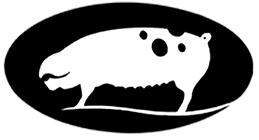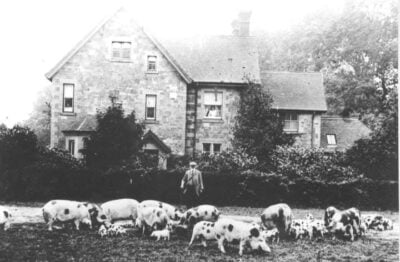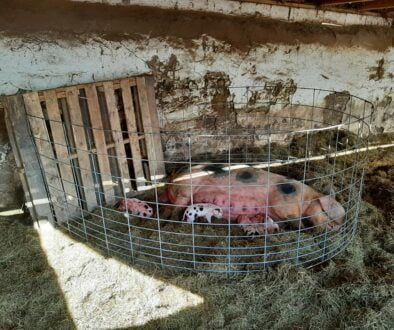Glos Old Spots & Other Trad Pigs
Gloucestershire Old Spots – a breed that is probably the closest thing to porcine Marmite. Why? Many keepers of other breeds hate them. Too laid back; too dopey. Tried them once – never again.
Yet enthusiasts around the UK would swap them for nothing else. They are quiet and largely, shall we say, relaxed. They are great mothers and do their litters well. They are tough and hardy and will produce an excellent ‘traditional’ carcase with well-filled muscle and enough fat to baste and flavour the meat as it cooks.
But they’ve enjoyed mixed fortunes over the years and could have gone the way of the Cumberland and Lincolnshire Curly Coat on a number of occasions.
They became a recognised breed in 1913 when the then independent breed society was formed. Some arm twisting went on as the government of the day insisted that for male breeding animals to be licensed – a pre-condition then before they could be used as a stud animal – they had to be registered with a recognised breed society. A number of pig breed societies thus came in to existence either side of WW1. It was said at the time that pigs of this type had been known in the area of Berkeley Vale – roughly between Gloucester and Bristol to the south of the river Severn – “Since time immemorial.” Tracing through many livestock books of the 19th century, it seems that the GOS evolved from the original Gloucester pig, a white slab-sided animal with wattles hanging from its neck, crossed with the unimproved Berkshire (basically similar to the modern Oxford Sandy & Black).
Almost immediately, they took off in popularity. By 1921 the herd book was the largest ever published for a pig breed with over 5,000 females and 1,400 boars registered in the previous year. They’d been exported to America to help create the Spotted Poland China and done their bit for the war effort when the Kaiser in 1914 ordered a top quality boar which was paid for but never shipped.
But demand was being exploited by certain breeders and unsuitable pigs were being sold as breeding stock and the bubble quickly burst taking the Orchard Pig from hero to near zero.
This wasn’t the only low point for the breed but it did slowly recover over the years but never to the extent of those early, heady years.
I’ll leave it there for now but we’ll come back to it later in the week.



